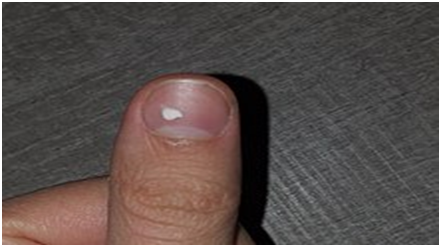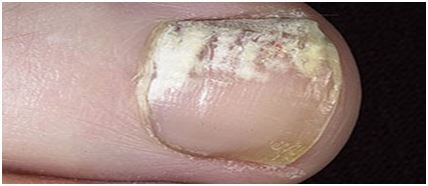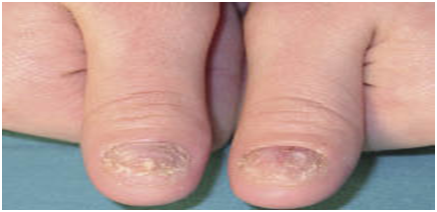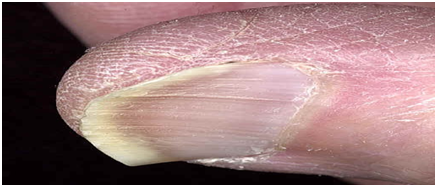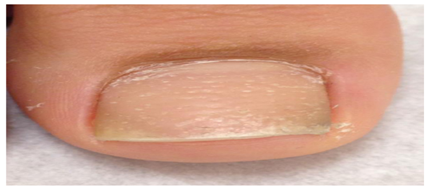A touch of white here, a rosy tinge there, or some rippling or bumps may be a sign of disease in the body. Problems in the liver, lungs, and heart can show up in your nails. Keep reading to learn what secrets your nails might reveal. If the nails are mostly white with darker rims, this can indicate liver problems, such as hepatitis.
Eyes may be the windows to the soul, but nails can offer an important glimpse into your overall health. It turns out, having strong, healthy nails isn’t just good news for your manicure—unpleasant nail symptoms could also indicate bigger health problems.
Yellow nails
This can happen naturally with age. “But it’s also sometimes due to nail lacquers or acrylic nails.” If you often wear acrylic nails or paint your nails and are having this problem, try taking a break from the salon and give nails a chance to recover. Another possible cause is smoking, which can stain nails and give them a yellowish hue.
Dry, cracked, or brittle nails
This issue is a common one, and there are a few possible causes. Soft, brittle nails can occur from dryness on the nail plate. “This could be from swimming, overuse of nail polish remover, frequent dishwashing without gloves, or just from living in a low-humidity environment.” Other possible causes include chemicals (such as if you’re frequently exposed to cleaning products) or aging. However, if brittle nails are an ongoing problem, speak to your doctor: sometimes hypothyroidism (a condition where the thyroid works too slowly) causes this side effect, too.
To soothe cracked nails, try slathering them with a super-moisturizing lotion. Like your skin, nails are absorbent, and lotion can prevent them from drying out in the future. We recommend choosing a product that contains hyaluronic acid, glycerine. If that doesn’t help, you can also try taking biotin, an over-the-counter nutritional supplement that promotes healthy nail growth.
Clubbing
Clubbing of the nails—when the ends of your fingers swell and the nail becomes curved and rounded—can sometimes be a sign of liver or kidney disease. If you’re experiencing this, speak to your doctor.
White spots
Many people believe that white spots on nails indicate a calcium deficiency, but this isn’t typically the case: Usually, those white spots are not very significant. “They’re often the result of minor trauma, such as if you whack your finger against something, and aren’t generally to do with calcium.”
Horizontal ridges
Transverse (side to side) ridges on nails is typically the result of direct trauma to the nail or a more serious illness, in which case you’ll see it on more than one nail at a time.” The reason? When your body is working overtime to combat an illness, it saves its energy for the important stuff. “Your body is saying, ‘I’ve got better things to do than make nails’ and pauses their growth.
Another possible cause for those side-to-side ridges? “Horizontal lines across the nail plate can also be caused by a drug reaction, for example, if the patient recently had chemotherapy.
Vertical ridges
This is usually a normal sign of aging. “Just like wrinkles on your face, you also get lines on your nails as you age.
Severely bitten nails
Nail-biting is a common habit, but if it’s excessive—say, constant biting or picking at the skin around the nails—it could be a sign of obsessive-compulsive disorder. “Sometimes psychiatric medicine is required to treat OCD-related nail-biting. “A bitter-tasting compound that’s polished onto the nails can help, too.”
Spoon nails
“Spoon” nails refer to a very thin nail that has become concave in shape. This is usually a sign of iron deficiency anaemia, we recommend speaking to your doctor if you’re experiencing this. “It can be treated with iron supplements.” Extremely pale nails could also be a sign of iron deficiency anaemia.
Pitting
Speak to your doctor if your nails are covered with pits or dents, as this could be a sign that you have psoriasis.
Dark stripes or a painful growth
If you have black discoloration on your nails (such as black streaks) or a painful growth on the nail, see your doctor immediately. “Melanoma that comes from the nail unit is serious, and can sometimes cause black lines or stripes to appear on the nail,”. “So if you see those changes happening on your nails, it’s important to see a doctor.” And although melanoma is generally less common in Hispanic, Asian, and black populations, Anthony says that those patients may be more likely to see dark stripes when the disease is present—making a trip to the doctor even more important.
Prevention and Treatment
Your treatment options depend on how you developed this condition. Puffy nail beds may respond to certain pills or steroid creams. To know which one to use, consult your doctor. If you want to get rid of paronychia and stay rid of it, consider avoiding water and harsh chemicals on your hands. See if you can use waterproof rubber gloves, for instance. Avoid putting your fingers in your mouth (such as when thumb-sucking). And when you wash your hands, follow up with a moisturizing lotion










